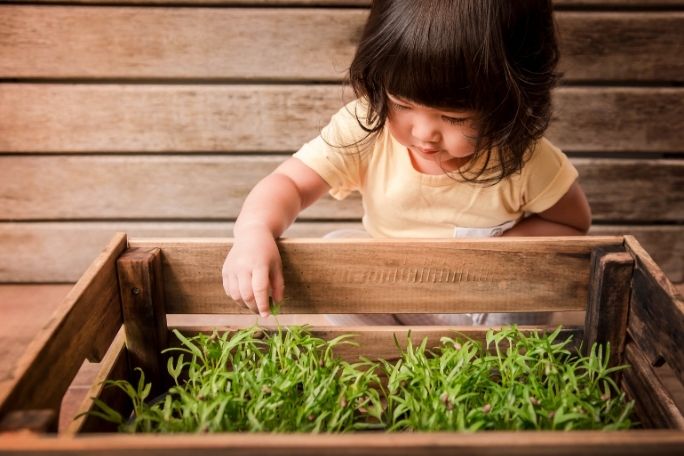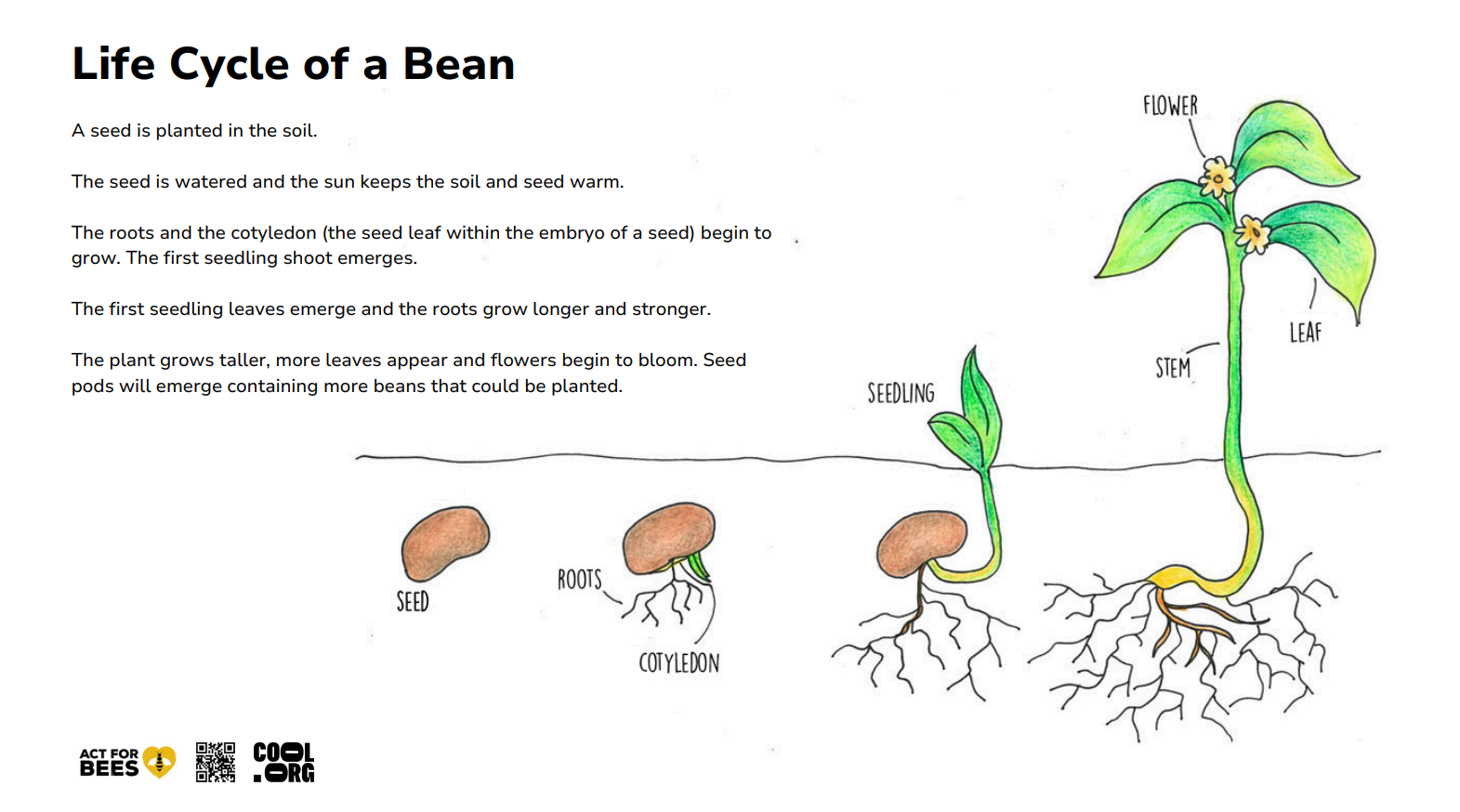Lesson summary
In this activity children explore how plants grow from seeds. Children begin by looking for plants in their yard and identifying the parts of a plant. They then participate in a guided role-play activity where they act out the way a seed grows into a plant. Children plant seeds into tubs which they then remove at different stages of growth to observe how the roots and shoots form. This activity is designed to help connect children to the wonders of the natural world through sensory and play-based learning.
Activity Intention:
- This activity is designed to help connect children to the wonders of the natural world through sensory and play-based learning.
Lesson guides and printables
Lesson details
Curriculum Mapping
Learning Outcome 2:
- Children are connected with and contribute to their world
- 2.4 Children become socially responsible and show respect for the environment
Learning Outcome 4:
- Children are confident and involved learners
- 4.1 Children develop dispositions for learning such as curiosity, cooperation, confidence, creativity, commitment, enthusiasm, persistence, imagination and reflexivity
- 4.2 Children develop a range of skills and processes such as problem-solving, inquiry, experimentation, hypothesising, researching and investigating
- 4.4 Children resource their own learning through connecting with people, place, technologies and natural and processed materials
Learning Outcome 5:
- Children are effective communicators
- 5.1 Children interact verbally and non-verbally with others for a range of purposes
Resources Required
Ages 0 – 2:
- You will need four or five small planting tubs filled with soil, a class set of gardening gloves, as well as equipment to label the tubes. You will also need as many seeds as you have tubs (quick germinating seeds include watermelons, beans, peas, zucchini and pumpkin – check your local nursery). You should choose just one type of seed to plant. Alternatively, you could choose to sprout seeds in a jar.
Ages 3 to 5:
- You will need at least ten small planting tubs (unfilled) and soil, a class set of gardening gloves, as well as equipment to label the tubes. You will also need as many seeds as you have tubs (quick germinating seeds include watermelons, beans, peas, zucchini and pumpkin – check your local nursery). You should choose just one type of seed to plant. Alternatively, you could choose to sprout seeds in a jar.
- Optional – Plant Life Cycle Factsheet
Additional Info
This lesson has been created in partnership with ACT for Bees. ACT for Bees is a not-for-profit organisation taking action to preserve these essential pollinators, ensuring a food-secure future.



Welcome back!
Don't have an account yet?
Log in with:
Create your free Cool.org account.
Many of our resources are free, with an option to upgrade to Cool+ for premium content.
Already have an account?
Sign up with:
By signing up you accept Cool.org's Terms and Conditions(Opens in new tab) and Privacy Policy(Opens in new tab).